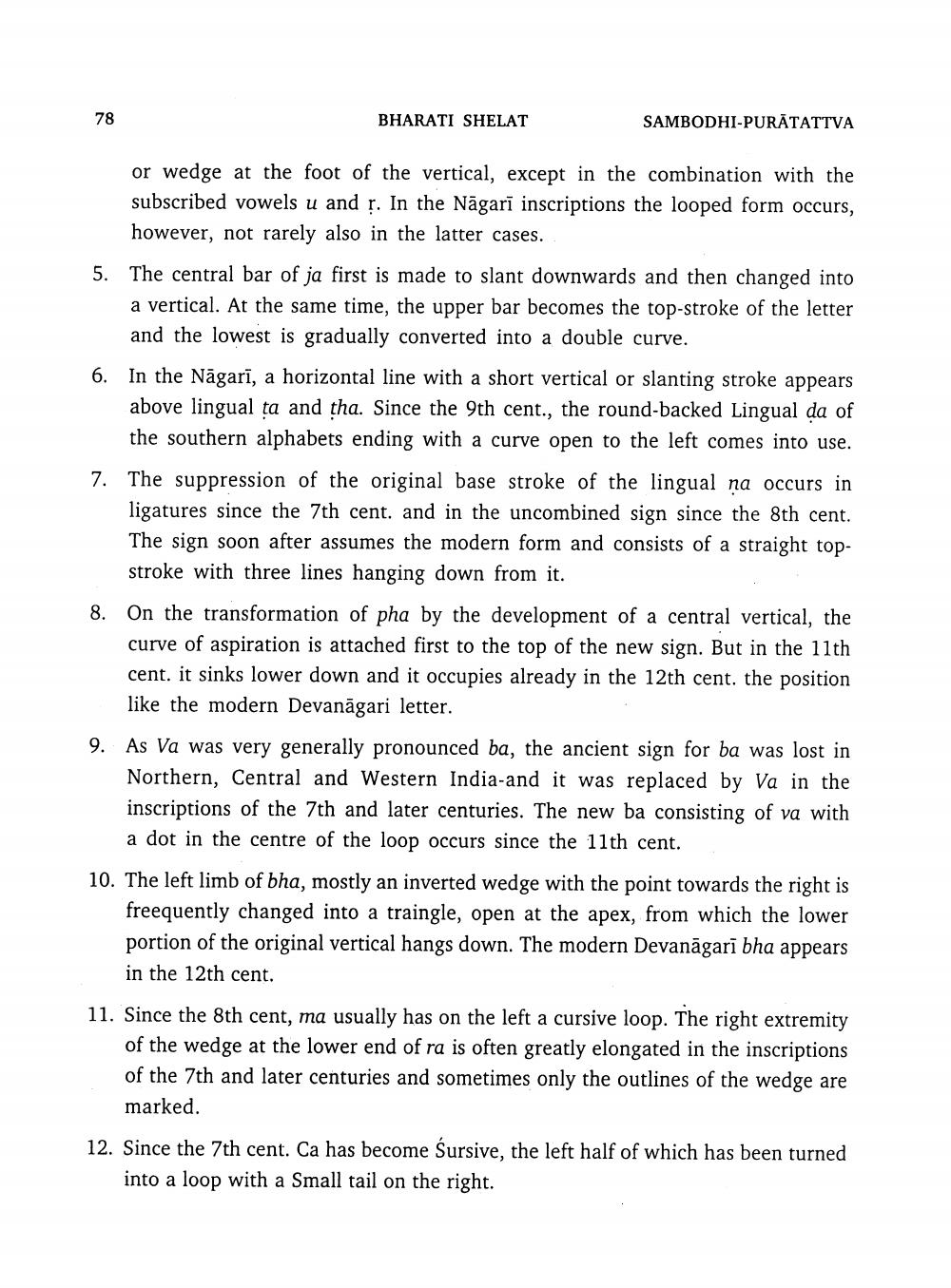________________
78
BHARATI SHELAT
SAMBODHI-PURĀTATTVA
or wedge at the foot of the vertical, except in the combination with the subscribed vowels u and . In the Nāgarī inscriptions the looped form occurs, however, not rarely also in the latter cases.
5. The central bar of ja first is made to slant downwards and then changed into
a vertical. At the same time, the upper bar becomes the top-stroke of the letter
and the lowest is gradually converted into a double curve. 6. In the Nāgarī, a horizontal line with a short vertical or slanting stroke appears
above lingual ta and tha. Since the 9th cent., the round-backed Lingual da of the southern alphabets ending with a curve open to the left comes into use.
7. The suppression of the original base stroke of the lingual na occurs in
ent, and in the uncombined sign since the 8th cent. The sign soon after assumes the modern form and consists of a straight topstroke with three lines hanging down from it.
8. On the transformation of pha by the development of a central vertical, the
curve of aspiration is attached first to the top of the new sign. But in the 11th cent. it sinks lower down and it occupies already in the 12th cent. the position like the modern Devanāgari letter.
9. As Va was very generally pronounced ba, the ancient sign for ba was lost in
Northern, Central and Western India-and it was replaced by Va in the inscriptions of the 7th and later centuries. The new ba consisting of va with a dot in the centre of the loop occurs since the 11th cent.
10. The left limb of bha, mostly an inverted wedge with the point towards the right is
freequently changed into a traingle, open at the apex, from which the lower portion of the original vertical hangs down. The modern Devanāgarī bha appears
in the 12th cent. 11. Since the 8th cent, ma usually has on the left a cursive loop. The right extremity
of the wedge at the lower end of ra is often greatly elongated in the inscriptions of the 7th and later centuries and sometimes only the outlines of the wedge are
marked. 12. Since the 7th cent. Ca has become Sursive, the left half of which has been turned
into a loop with a Small tail on the right.




